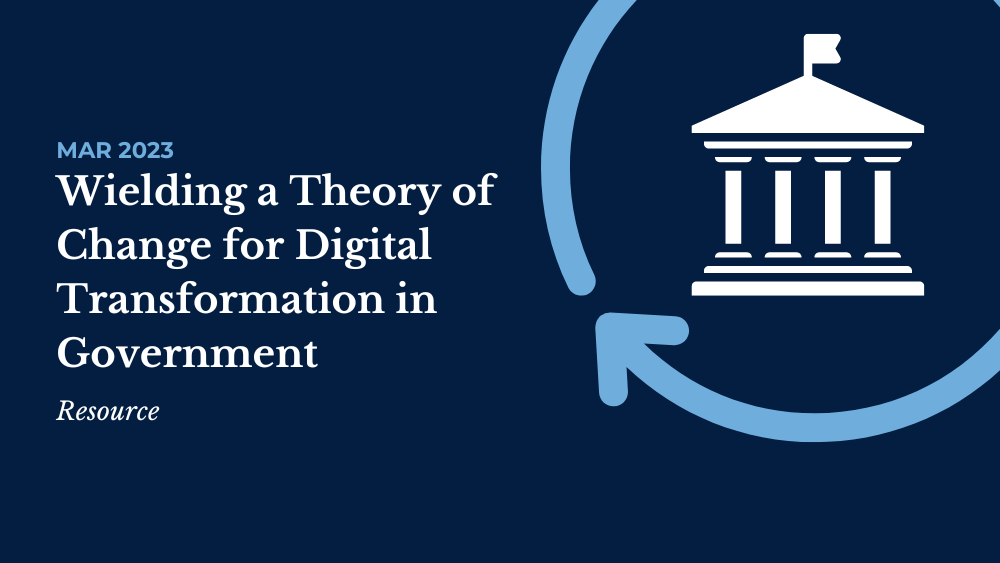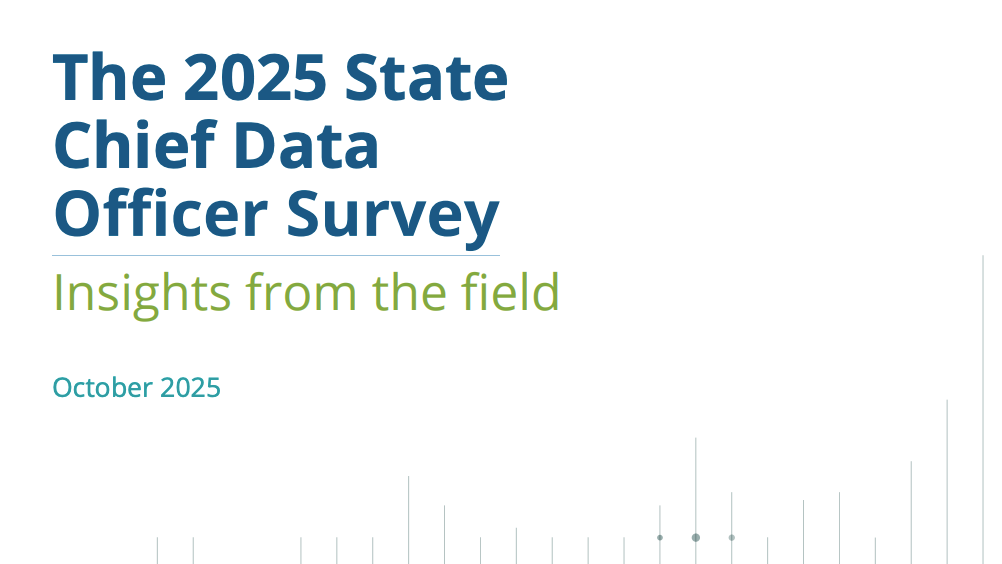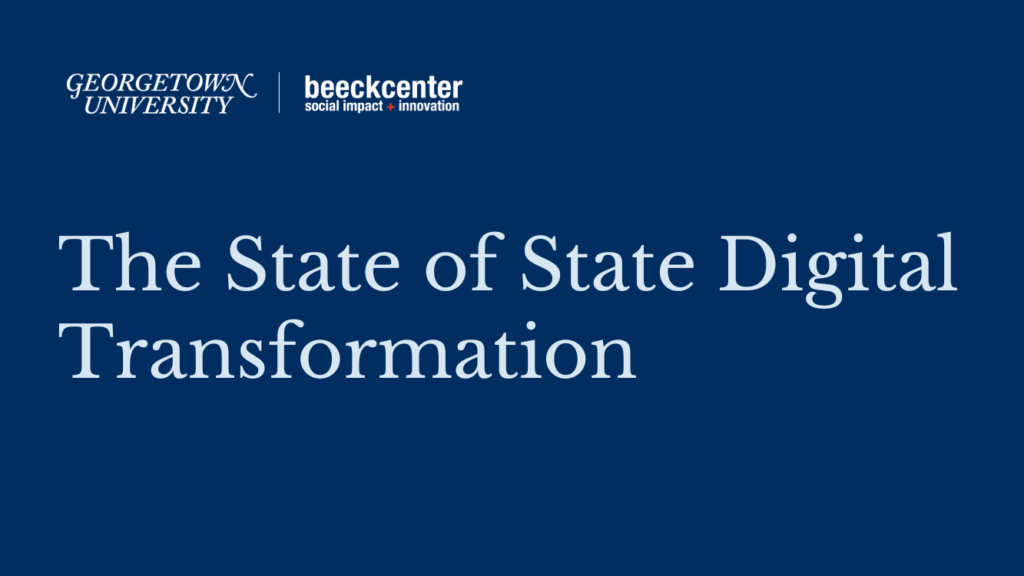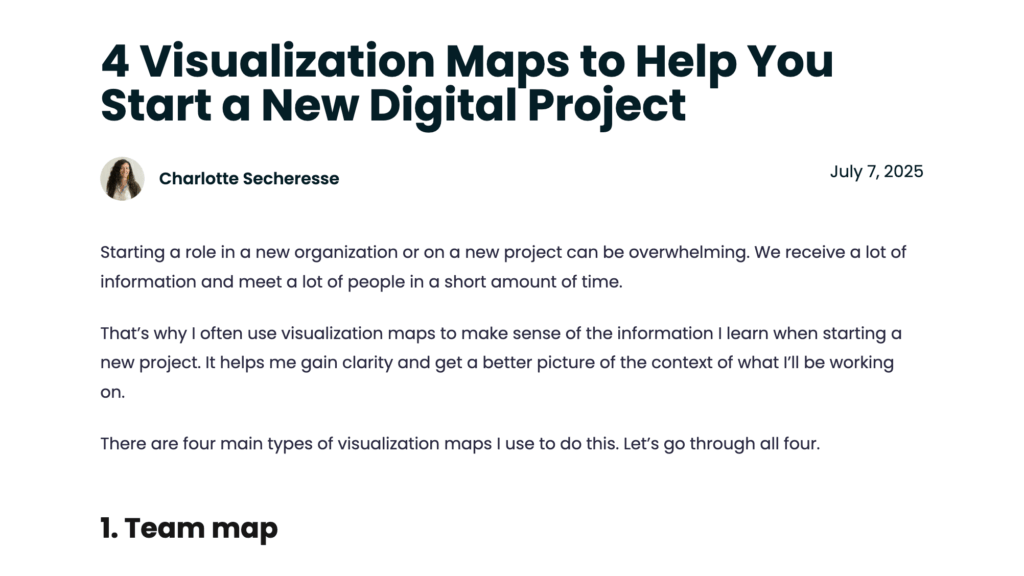Wielding a Theory of Change for Digital Transformation in Government
In our research announcement on theories of change (ToC) for digital government transformation, the Digital Service Network (DSN) shared our belief that all digital service (DS) teams should work to develop a ToC. This essay explores how you can use your ToC with different stakeholders.

This essay is part 2 of 2 in the Digital Service Network’s series on theories of change for government Digital Service teams. In it, we explore three realms where you might consider wielding a theory of change – internally, with partners, and with executives – and feature advice and experiences from practitioners in the field. You can find the theories of change resource appendix here.
In our first essay on theories of change (ToC) for digital transformation in government, we discussed the elements of a sound ToC for Digital Service (DS) teams and other digital government practitioners. We shared these elements alongside advice and experiences from digital government experts in Colorado, Ontario, and Baltimore about the process and value of crafting a ToC.
In this essay, we explore how a ToC is made explicit with various audiences. An explicit ToC is one that is commonly understood among relevant stakeholders and is therefore used not only as a strategy-building tool, but also as a tool for communication.
Once you have a ToC, what should you do with it? From motivating your team and selecting projects, to generating alignment with partners and advocating for resources with executives, a sound, explicit ToC can be a practical asset for digital practitioners in a variety of contexts.
ToCs are malleable: for example, a ToC used internally for measurement and evaluation purposes will be quite detailed and specific, whereas a ToC being used to introduce someone new to your work can be more high-level so that it can be understood quickly and easily. A ToC used to communicate a clear strategy with leadership might strike a level of detail somewhere in between.
Once you’ve created the most detailed version of your ToC – and this is the version you should craft first
– it’s easy to adapt it for a variety of purposes and audiences.
Using a theory of change with your team
The ToC you develop internally with your team should be the most detailed version you produce. It should include in-depth context across each element:
- Detailed evidence you’ve gathered about your current state and the problems you’re setting out to tackle,
- A clearly defined and tangible desired end state that includes metrics of success, and
- A robust causal pathway that lays out and unpacks all of the intermediate outcomes, assumptions, and dependencies you can identify.
This will help everyone on your team understand and use the ToC to interpret the significance of their current work as it relates to the team’s holistic efforts and longer term goals.
Once it’s crafted, your ToC becomes a strategic asset for selecting projects and choosing courses of action. It gives you a clearer idea of which activities might be more or less likely to propel you along the causal pathway toward your desired end state, and helps you better invest limited time and resources.
Your ToC will also help you evaluate success more effectively. Through the process of crafting your ToC you will have specified not only what your end impact looks like, but also the various markers of success along the way.
If there isn’t a clear theory of change, that’s when people burn out. I have a tough time getting motivated or energized to work on a problem or build a solution if I can’t see a clear theory of change. If I don’t know what your path is to get from problem to solution, and what your expected impact is – or if I see your theory of change but it doesn’t make sense – you lose me.”
Justin Elszasz
Former Chief Data Officer, Baltimore
Finally, a ToC can help boost team morale. By making clear in detail and with rigorous logic why near-term work matters to long-term aims, ToCs can help mitigate burnout and improve retention on your team. Your ToC can become something to return to as a team when difficult barriers come up that stall your project or lead you to lose key supporters or resources.
Developing a ToC is valuable to teams not only as a product, but as a process in and of itself. A critical part of crafting a ToC is articulating the causal pathway, which demands that teams surface the assumptions and dependencies inherent in the path they plan to take toward change.
Highlighting and interrogating these assumptions and articulating exactly what you’re depending on to achieve success is an invaluable process for teams to undertake collectively. It helps get everyone on the same page (and excited!) about how they plan to make a specific impact, preventing mistakes or disagreements down the road due to misalignment.
The benefit of developing our ToC in a collaborative way as a whole team was that everyone felt bought in. We use our ToC on the first slide at the start of each staff meeting as an anchoring reminder of ‘yup, this is what we agreed to”
Matthew McAllister
Former Director, Colorado Digital Service
In the first year of Covid, I was managing the CitiStat team. One of our bosses wanted a CovidStat: every two weeks we’d check in to review the latest data, and the Mayor, the Health Commissioner, and a slew of decision makers would be there. Their hope is that it would be the space where all Covid decisions and policy would be informed. But it’s the executives prerogative to manage how they want to manage – and the mayor we had at the time, that’s just not how he operated.
My team quickly sniffed that out. So our boss had an implied theory of change – that having these repeated, specifically structured check-ins will help us make better decision making in response to Covid – but the piece missing in that theory was the executive leadership’s buy-in. So we went through a rough period of burnout and frustration on our team, and it stemmed directly from a breakdown in the theory of change that one of our executives was using.”
Justin Elszasz
Former Chief Data Officer, Baltimore
Using a theory of change with project partners
DS teams often partner with and rely on sustained engagement and support from other agencies to advance their work. Rooting conversations with your partners in a simple version of your ToC is a strategy for gaining and sustaining buy-in by kick-starting a conversation that helps outsiders understand what you do, how you do it, and why you do it that way.
The ToC you use with partners will often be the most concise form of your ToC – a pithy version that communicates each component of your ToC quickly, easily, and powerfully. Your aim is to gesture at your ToC’s current state, end state, and causal pathway, without getting bogged down in the details.
For example, the Colorado Digital Service (CDS) distilled its ToC into a single sentence. They then embedded that sentence into the one-page commitment which all partners agree to when beginning a project with CDS:
| “The Colorado Digital Service will help to mature state agencies’ approach to delivering high quality products and services to all of Colorado by focusing on people, process and technology.” |
In this distillation, CDS aimed to succinctly articulate for outsiders the “who, what, how, and how it is measured” – all of the component parts of a sound ToC.
DS teams regularly ask government staff to change what they do and how they do it. Your partners can’t read your mind to understand why a change is important – you need to bring them along with you. You can use your ToC to help make your assumptions explicit not only for your team, but for your partners, too. Your ToC gives your partners an opportunity to see their own goals aligned with yours – and to see collaborating with you as an attractive means of attaining these shared objectives.
After our first year as a team, we did a retro and treated it as a discovery sprint. We interviewed 40 people that we’d engaged with and we learned a lot – but overall, we learned that people didn’t understand our team, what we were doing, or how we were different from the rest of the Office of Information and Technology. So crafting a narrative theory of change and sharing it with external partners has paid dividends, because they understand how we fit in their mental model.”
Stephanie Cain
Former Deputy Director, Colorado Digital Service
People affected by your change need to understand why the change is happening, why it matters to their work specifically, and to feel like their perspective is valid – *before* the change is implemented. If they don’t feel that way, they might resist the change entirely – or they might adopt it begrudgingly, and do the minimum required. They definitely won’t champion the change the way you might want them to. Civic tech teams are often made up of people with a wide variety of experiences and disciplines in tech and government, so a well-implemented theory of change can be a great way o build a sense of shared mission, and to help people really feel like they’re part of something important, something e bigger than themselves.”
Shira Honig
Senior Data Policy Advisor, MDSS, Ontario
For teams like a Digital Service team, which are often operating in uncertainty and trying to fail safely and productively, a theory of change becomes a valuable tool and an important reminder to folks that you’re trying something new.”
Justin Elszasz
Former Chief Data Officer, Baltimore
Using a theory of change with executives
A ToC can help your team recruit executive champions and allies by helping you communicate how your team’s work is critical to realizing shared goals. When using your ToC to bring higher-ups on board with a strategy, a version that includes a moderate amount of detail is likely to be most useful.
You don’t want to overwhelm leaders with too much detail, but you do want to lay out the logic of your thinking in a way that makes clear how your goals align with theirs and which preempts fears they might have about your approach. This might look like a definition of the current state that includes a fair amount of supporting evidence, a concise and powerfully articulated end state that emphasizes alignment with executive priorities, and a causal pathway that highlights shared intermediate outcomes and makes a compelling case that you’ll be successful.
When advocating for resources with leadership and executive – whether that’s sponsorship and aircover, or more tangible resources like budget and staffing – you’re working to present a well-founded strategic case for success. That’s exactly what a ToC helps to demonstrate. Sharing this case with executives can help your team acquire levers that will help you affect the change your ToC lays out. Additionally, because ToCs present a clear framework for measuring success, sharing it can help get executives to evaluate your success on the same terms as you.
Of course, a ToC is not a silver bullet to getting resources and support. But by using a sound ToC to inform advocacy for your team’s work and its needs, you can rest easy knowing that if you didn’t bring someone on board, it wasn’t because you didn’t lay out a viable path to success.
Change in government is slow. The impacts of our work are rarely immediate. So if you’re staring at a KPI waiting for it to change, you’re going to be waiting awhile. And I’m the CDO, I’m data-driven – but you better have a theory of change that gives everyone hope and faith that the KPIs are going to improve when you’re going after big, transformative change.”
Justin Elszasz
Former Chief Data Officer, Baltimore
The deepest we’ve gone with using our theory of change was in a meeting with the Governor’s office. We really went into detail about what we are here to do, how we are going to do it, and we developed a four-page memo using language from our theory of change documentation. It helped us argue the case for why our team should grow.”
Matthew McAllister
Former Director of CDS, Colorado
Connect with DSN on theories of change
Are you a digital government practitioner with a story to tell about crafting a ToC, or other strategies you’ve taken for successful change management? Are you interested in support for kick-starting a sound, explicit ToC for digital
government transformation?
If so, the DSN would love to hear from you. We can help you tell your story, build peer-learning opportunities, and offer resources and guidance. Reach out at digitalservicenetwork@georgetown.edu.
Theories of change and change management techniques can induce clarity. Understanding where you currently are and defining the impacts you’re working toward demand finding clarity in the complex ecosystems that digital government practitioners work in – then you can use that clarity to help communicate with and bring on board the people you’re dependent on to get what you need.”
Shira Honig
Senior Data Policy Advisor, MCSS, Ontario


